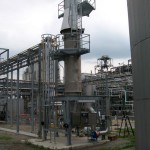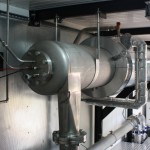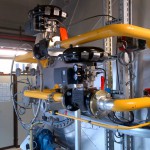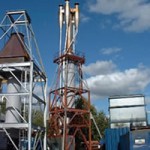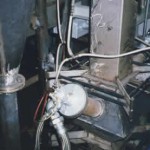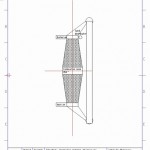Thermal oxidation, (after burning, with or without heat reclamation,) of process air and/or vapors.
The origin of this air can be numerous; from dryers, printing presses, paint ovens and a lot of other thermal or biologic processes.
Combustors
Combustors combine a combustion room with an internal (multi) fuel or pilot burner(s). These combustion rooms consist of a whole metallic triple wall, so no ceramics are used. Low maintenance costs are the result and short start-up and shutdown times are realizable.
Combustors have proved their liability hundreds of times and are very reliable. Typical temperatures in the flame can be set at a range from 600° C. up to 2000° C.
Such a design brings the advantage of a preheat section for the air to be processed. The air is preheated up to (400 – 600° C.) and that enhances the oxidation process considerably.
Quick and complete combustion even of cumbersome gas flows can be guarantied. This heat recovery, from the process itself, not only enhances the oxidation but is also the main reason for the low fuel consumption. In many cases, only the solvents in the air will be sufficient to supply for the caloric heat demand of the oxidation process.
Trickle flow reactors
When polluted process air is to be cleaned, one has several options: Scrubbing, ( Bio) filtering, chemical treatment, and also Thermal Oxidation, burning the pollutants in the air flow.
Due to the increasing energy consumption, the larger the amount of air to be treated the less attractive the last option is, unless of course one finds a simple way to recuperate the heat in the off gasses to reduce the costs for the fuel. This is done by (stainless) steel heat exchangers, by full bed ceramic pebbles heat recuperation and by floating pebble heat recuperation the so called Trickle flow reactor.
Sand or other intermediate is used to transport the heat from the outgoing gasses to the incoming air flow. A temperature difference between the inlet and the outlet can be as small as 50 degrees Celsius. All organic components are burned in the middle of the process where 850 degrees Celsius are maintained. Especially with large flows this is a very interesting technique.

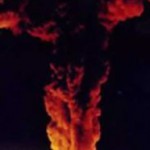
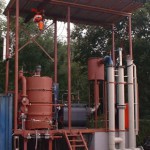
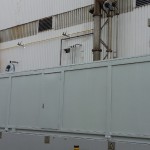
![Container[1] Container[1]](http://www.emgroup.nl/emg/wp-content/uploads/2017/03/Container1-150x150.jpg)
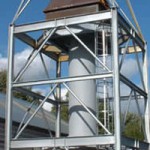
![100_0063[1] 100_0063[1]](http://www.emgroup.nl/emg/wp-content/uploads/2017/03/100_00631-150x150.jpg)
